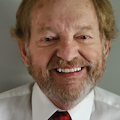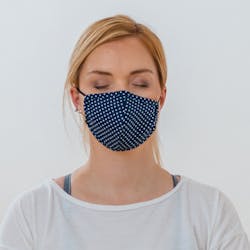Anxiolytic sedation: The greatest dental practice builder (that no one talks about)
During a 40-year quest to sustain a thriving dental practice, I’ve asked patients to refer lovely people like themselves, mailed newsletters, sent movie passes and car wash tokens to those who referred, and awarded carnations to favorite patients of the day, just to mention a few of our efforts. And these marketing ideas worked; at least, I’ve always been fully scheduled. So, my intent isn’t to pooh-pooh these worthy concepts (well, maybe just a little), but to propound a seldom discussed but significantly more essential subject: The ability to predictably provide painless and profound anesthesia remains the greatest practice builder extant.
But don’t all dentists provide painless and profound anesthesia? Not according to hundreds of patients I’ve seen. I suspect most dentists believe their shots don’t hurt (at least not much, and certainly no more than the next doctor’s), but begin to observe closely. Do patients tense, squeeze their eyes shut, clench fists, or exhibit other behaviors that might indicate things aren’t proceeding ideally? Should that be the case, even on occasion, let’s consider modalities that can ensure patient comfort, because highly successful dentists don’t hurt patients.
If N2O sedation didn’t exist, I’d still practice, but I try not to think about such nightmare scenarios. Nitrous reduces anxiety (first patients’ and then mine) while elevating pain thresholds (crucial for painless blocks). The gag reflexes that nitrous reduces is always a plus, but it can be a lifesaver when taking fixed or removable prosthodontic impressions. Considering the enhanced quality of care possible when treating comfortable patients in a relaxed and pleasant atmosphere, nitrous can make you a better dentist.
I rarely required local anesthetic to restore any primary tooth, but instead used three liters of oxygen and two liters of nitrous, never exceeding 50% N2O. (This doesn’t work on permanent teeth. I don’t know why.) To introduce N2O on a first operative visit, I’d ask my Lilliputian patient, “Would you please do me a favor? Amanda says this smells like candy; I say gum. Take a big sniff through our elephant nose (our name for bubblegum-flavored nasal hoods, although spaceman or deep-sea diver masks also work), and tell me what you think it smells like.” Only a breath or two is required for them to accept the nosepiece, and apparent profound relaxation occurs within two minutes so that treatment may begin.
I’ve had children brought to my operatory in near hysteria. (One four-year-old princess had endured five heart surgeries.) With nitrous turned up as high as possible, I casually held the nosepiece beneath the patient’s chin while talking soothingly about anything but dentistry. While chattering about her shoes, dress, or the time I treated Santa Claus’ teeth, I’d sense her begin to relax. The conversation would continue unabated as I adjusted the dosage, then gently place the hood on her nose.
A patient will experience discomfort only if mouth breathing. To assure nasal inhalation, I’d gently lay a finger on her lips while relating a fable about my previous life as a rabbit. (Or whatever flummery one prefers to distract.) Once accustomed to the nosepiece and the enjoyable, relaxing sensation, kids breathe correctly without prompting. (Parents are often greeted post-op with a gleeful, “I floated, Mommy!”)
Saving 10 minutes per procedure by not administering local proves an added benefit. So is not dealing with a child’s dismay over “frozen cheeks” or grotesquely chewed lips and the upset mothers they occasion.
Also, N2O is billable. The standard charge for nitrous is reportedly $75 per session. A modest 10 uses a week for 50 weeks represents (50 x 10 x $75) a $37,500 annual increase in revenue, while 5,000 minutes or 80 hours are saved by not needing local.
Dentists have informed me that nitrous alone isn’t sufficient to restore primary teeth. But I’ve used it successfully countless times, as have five associates who worked beside me. If you’d rather administer local to three-year-olds, be my guest. If not, give this technique a try. It would be prudent to select a compliant patient with a small cavity for one’s first effort.
Our next comfort source is topical anesthetic placed on dried tissue with a Q-tip for one minute. Dentists have also told me topicals don’t work. There’s no reason to take my word for it when empirical evidence is readily available. Numerous staff may volunteer to perform this procedure on their doctor, strictly in the name of science, or you can apply topical on one side and not on the other and then inject yourself with a few drops of local. A wall-hung mirror renders the lower premolar area easily accessible bilaterally, and this experiment should eliminate all doubt as to the effectiveness of topical anesthetic.
I always wiggle the tissue vigorously while placing the needle and throughout injections. According to the gate theory of pain, nerves carrying movement or pressure sensations are less able to transport pain messages. A lively conversation also helps distract. Verbalizing may seem difficult, but with iteration, it becomes second nature. I chatter like a squirrel while focusing patients’ minds on anything besides the whale harpoon with which they imagine me to be stabbing them.
Here’s good news: There is no need ever to give another dreaded palatal injection. Instead, on any tooth except mandibular molars, after buccal infiltration, use a pressure syringe (such as a Ligmaject) to inject the mesial and distal papillae from the buccal. After detecting blanching, painlessly inject the lingual sulcus. Complete anesthesia—even for endodontics or extractions—will be immediate.
I prefer the Gow-Gates block, which decreases intervascular injections, reduces muscle trauma (so, less trismus), and is more effective and comfortable. If a block and long buccal fail to provide complete anesthesia, they can be supplemented by Ligmaject injections into the sulcus around the tooth’s circumference. In my experience, using a pressure syringe before achieving soft-tissue anesthesia is painful.
I never treat a patient who isn’t totally numb, because such unfortunate circumstances make it challenging to do my best, horror stories recounted by patients might damage my reputation and bank balance, and superior alternatives to local alone exist. Nothing stresses me more than a patient who can “feel it” or even suspects he or she may. But some folks scream when topical is applied, and there exist recalcitrant cases where anesthesia, especially on mandibular molars, is invariably challenging to achieve.
Conscious sedation with oral medication, sometimes supplemented by N2O, is the ultimate modality for ensuring patient comfort, reducing the dentist’s stress, and—especially in our COVID-19 world—meaningfully enhancing profitability by allowing more extended and efficient appointments. Sedation will enable phobics, some of whom have suffered dental pain and infection for years, to complete long overdue care while converting them to fervent practice missionaries.
Under ideal circumstances, dentists’ tasks are daunting. Why anyone would choose to practice without availing themselves of this aid mystifies me. Sedation is also a billable procedure and incurs an average of $600 per session. Assuming a modest two cases per week for 50 weeks, this amounts to a (100 x $600) $60,000 production increase.
With the adjuncts now available, there is no excuse (other than dentists’ indifference) for even the most challenging patient not to be comfortable. Some technique enhancements may be necessary, but mostly it’s a matter of mindset and additional commitment to excellence. Judiciously consider the benefits to yourself, your practice, staff, and patients, and then expend the necessary effort to become hailed as a painless dentist. If your patient were a loved one, wouldn’t it be worth the effort? And why treat anyone less compassionately?
After eight years of higher education, paying 100% of costs himself, JOHN A. WILDE, DDS, spent two years in the Army Dental Corp before beginning a practice from scratch in Keokuk, Iowa. He was debt-free at age 30 and financially able to retire at age 40. He fully retired when he was 53, and he has written six books and published more than 200 articles. You may contact him at (309) 333-2865 or [email protected].
About the Author

John A. Wilde, DDS
After eight years of higher education, paying 100% of the cost himself, John A. Wilde, DDS, spent two years in the Army Dental Corps before beginning a practice from scratch in Keokuk, Iowa. By age 30, he was debt-free, owning outright his new country home and the practice he had designed and built. By 40, he was financially able to retire. At age 53, he fully retired. Dr. Wilde has authored six books and more than 220 articles, and may be reached at (309) 333-2865 or [email protected].

